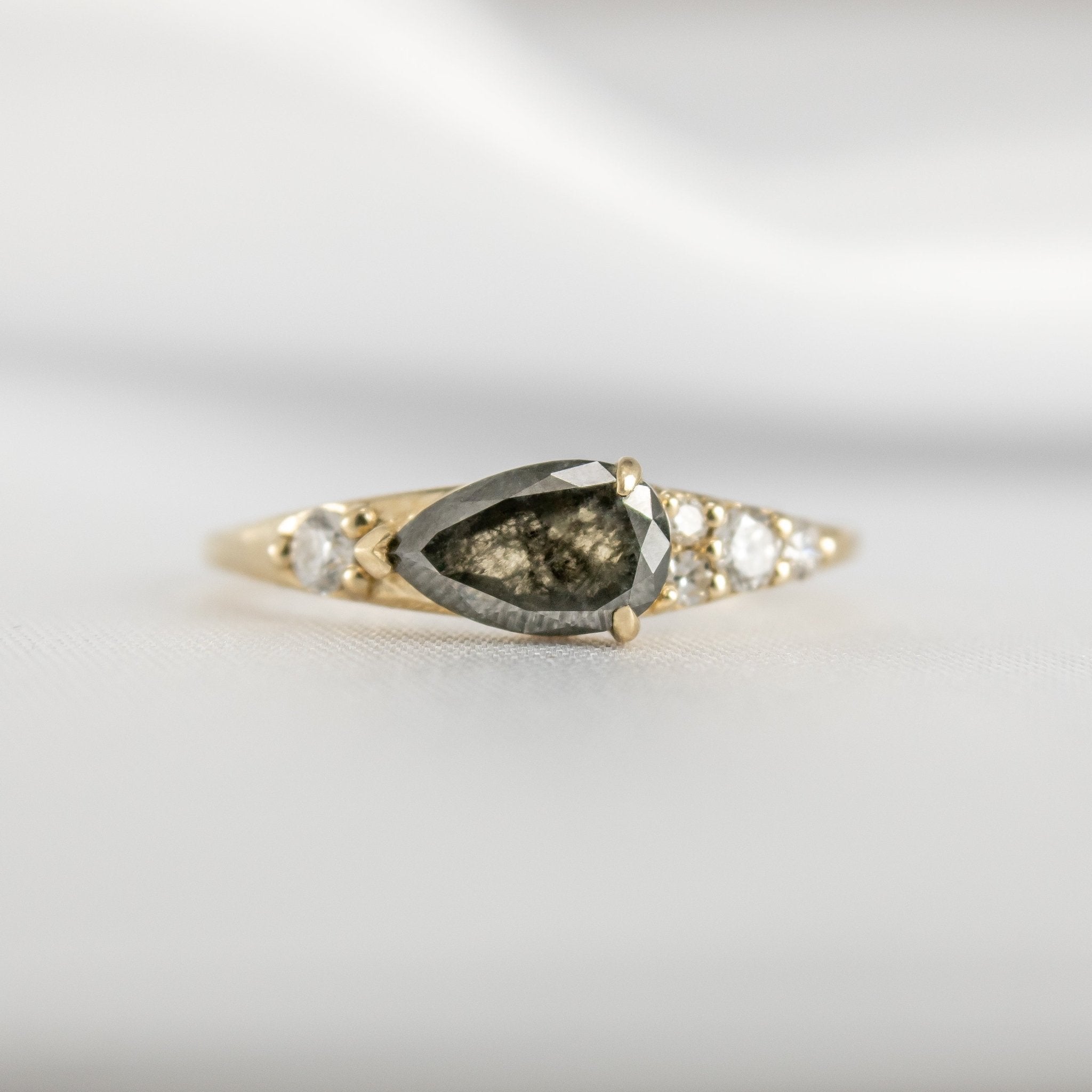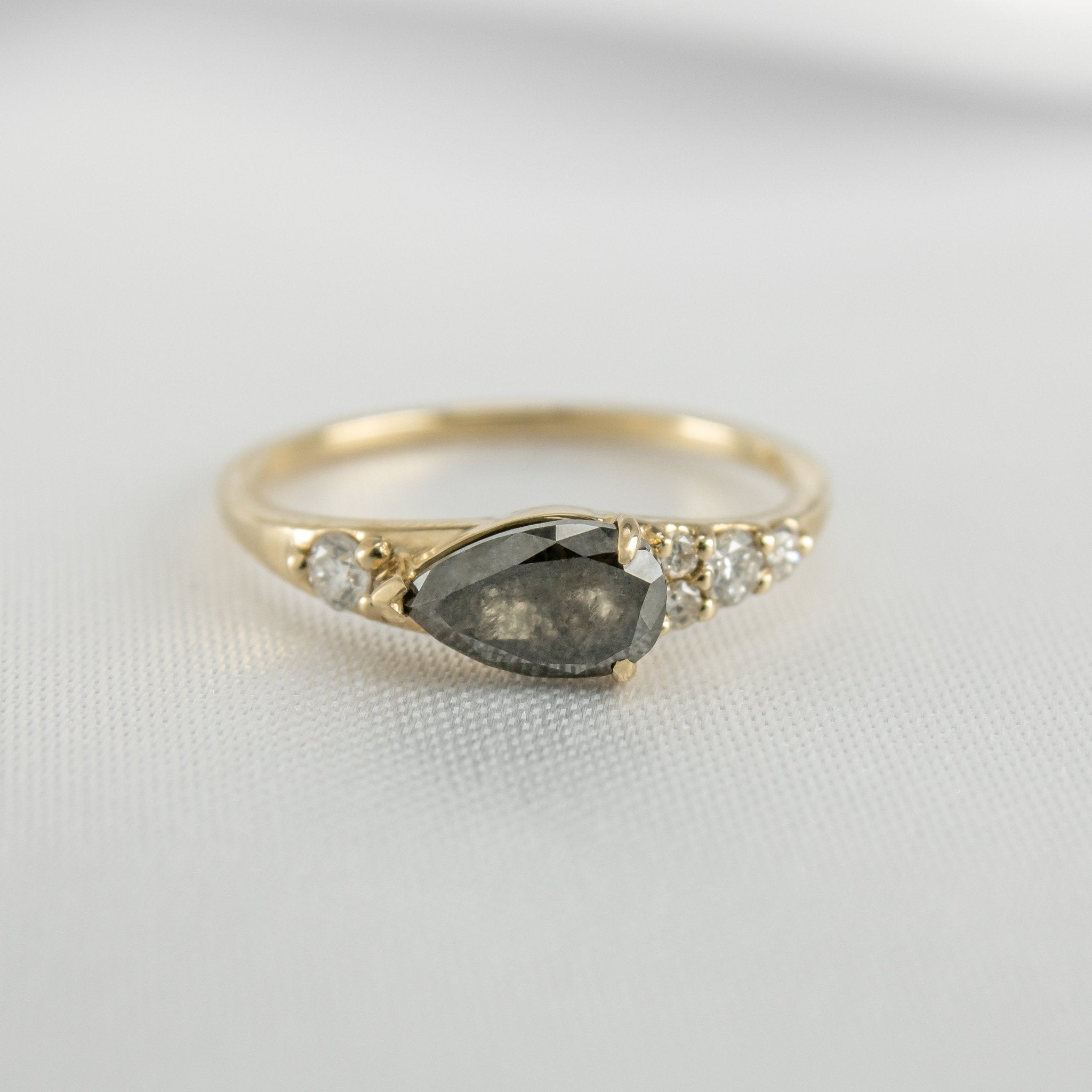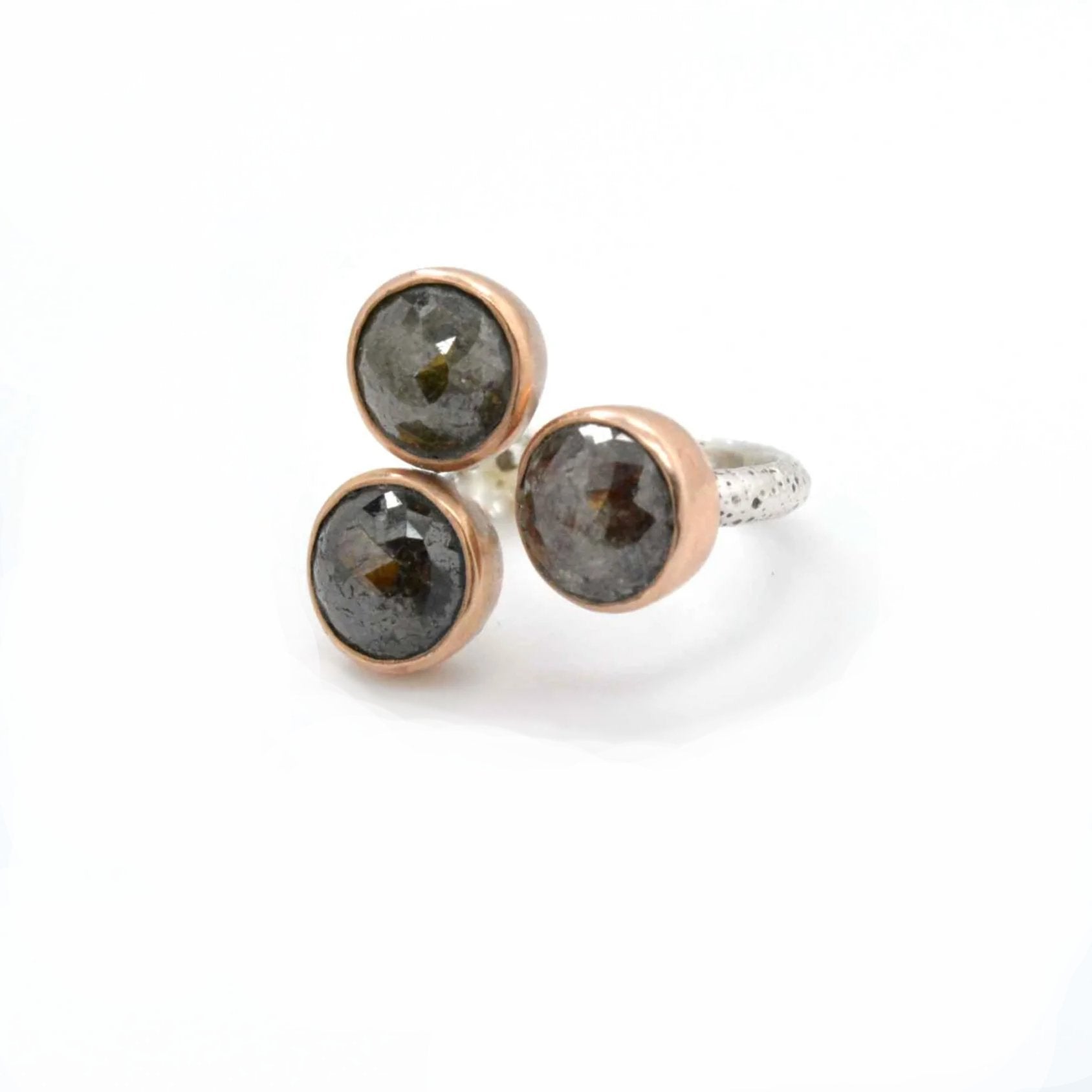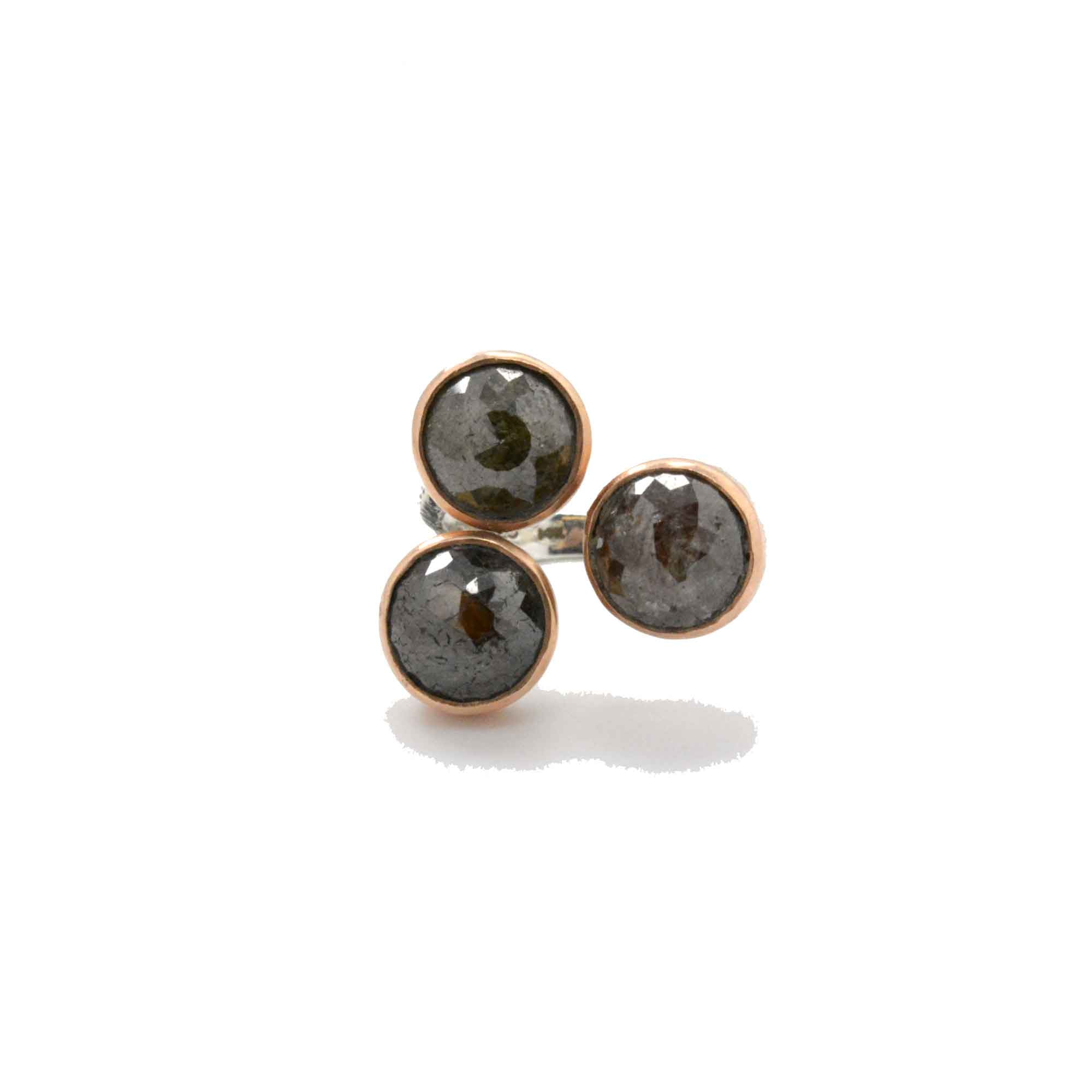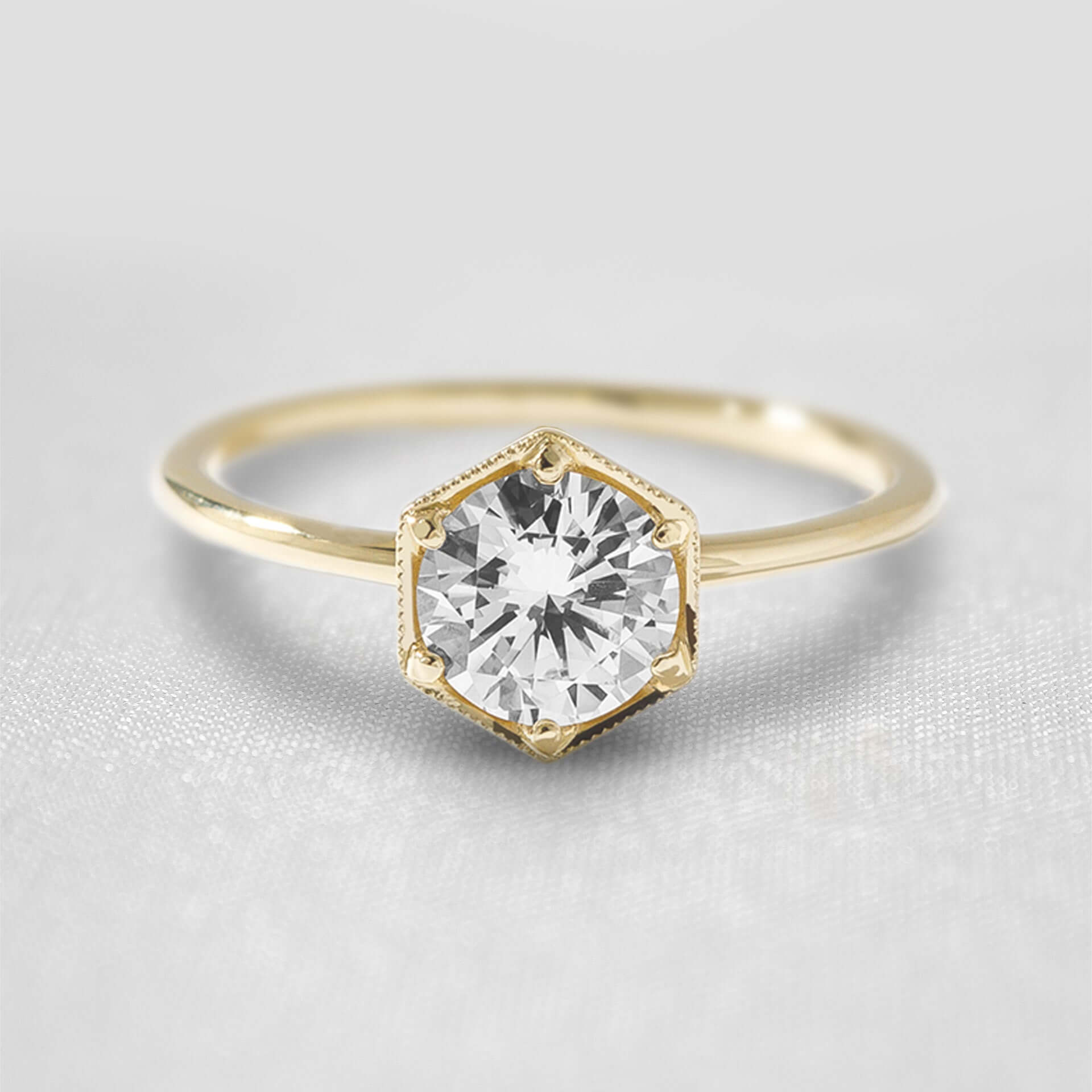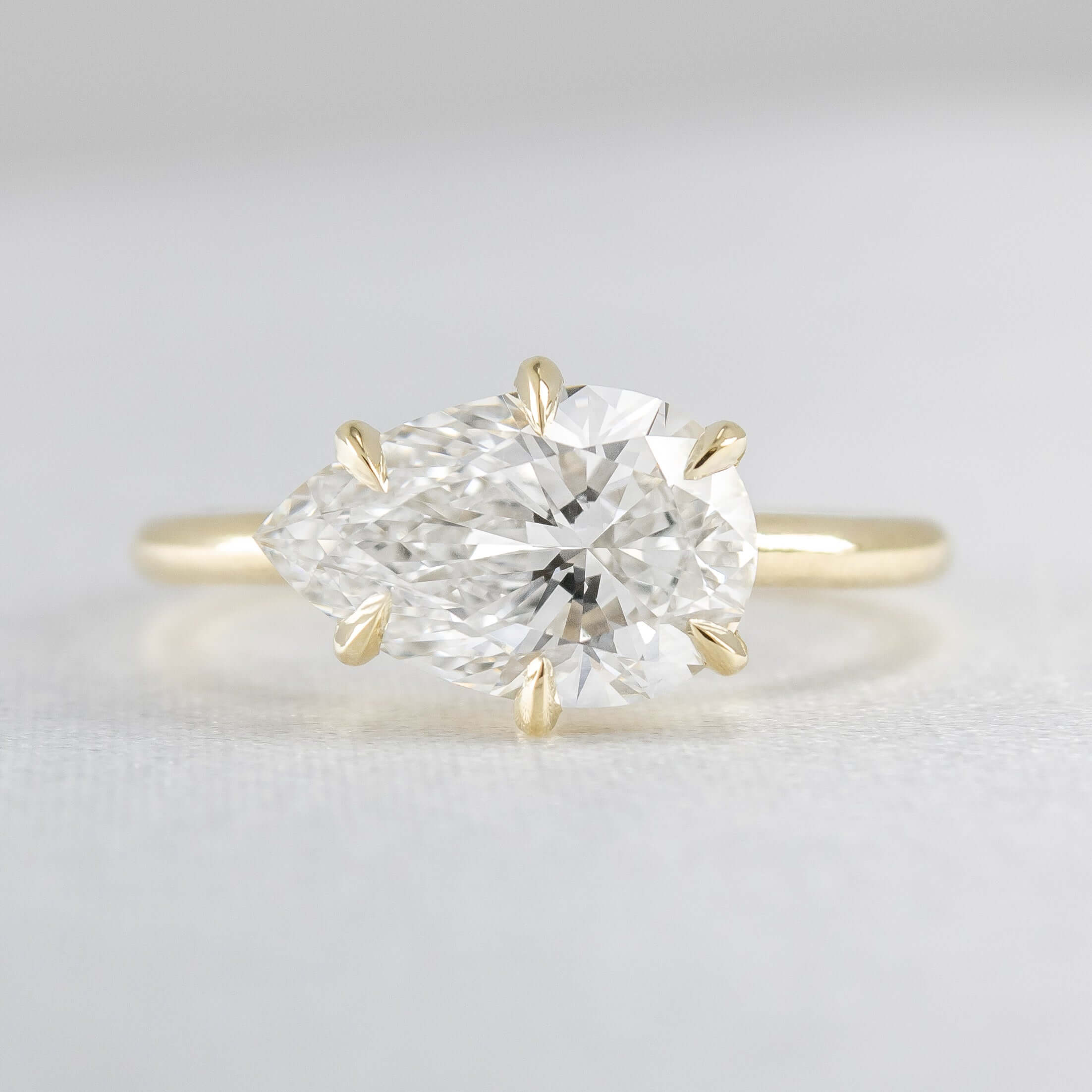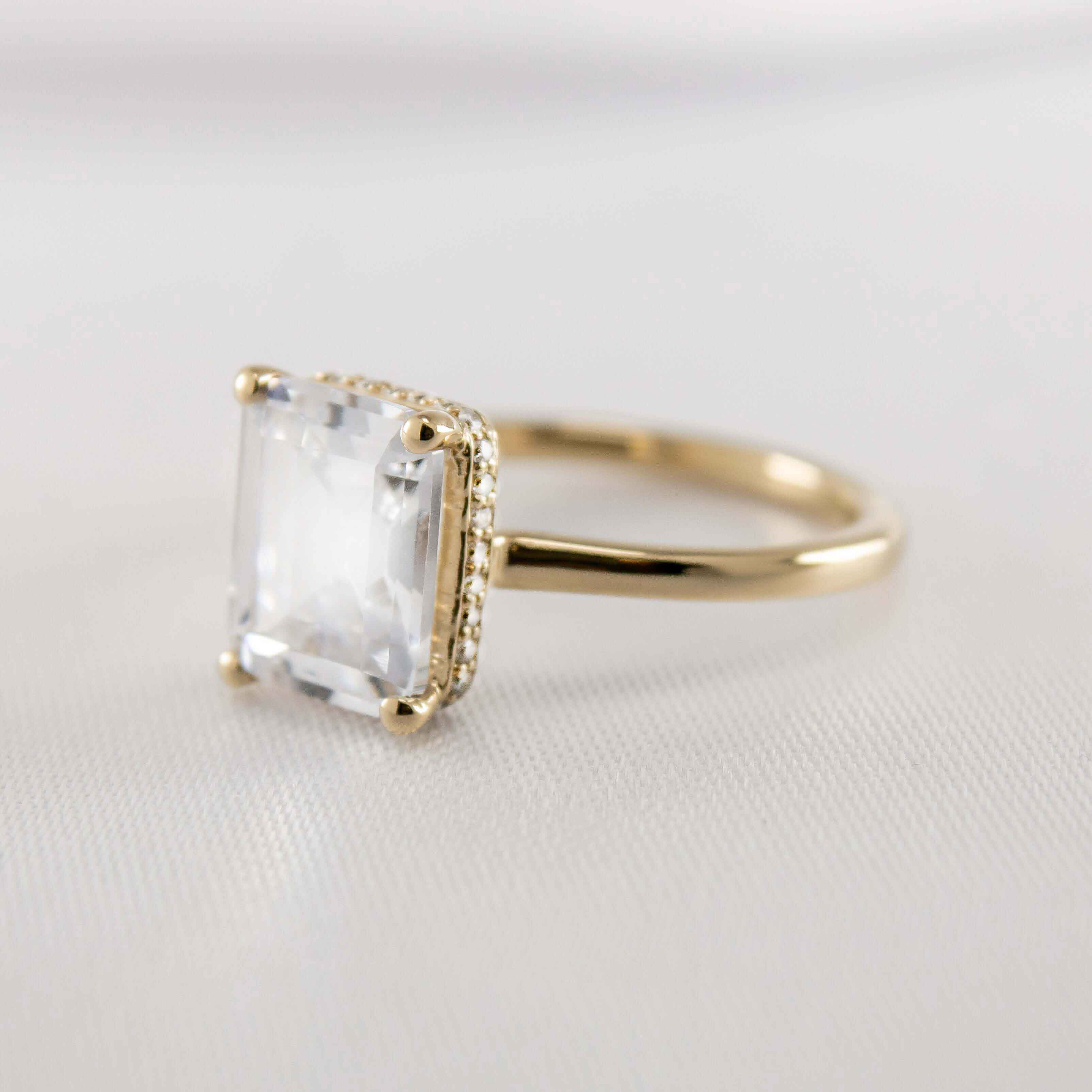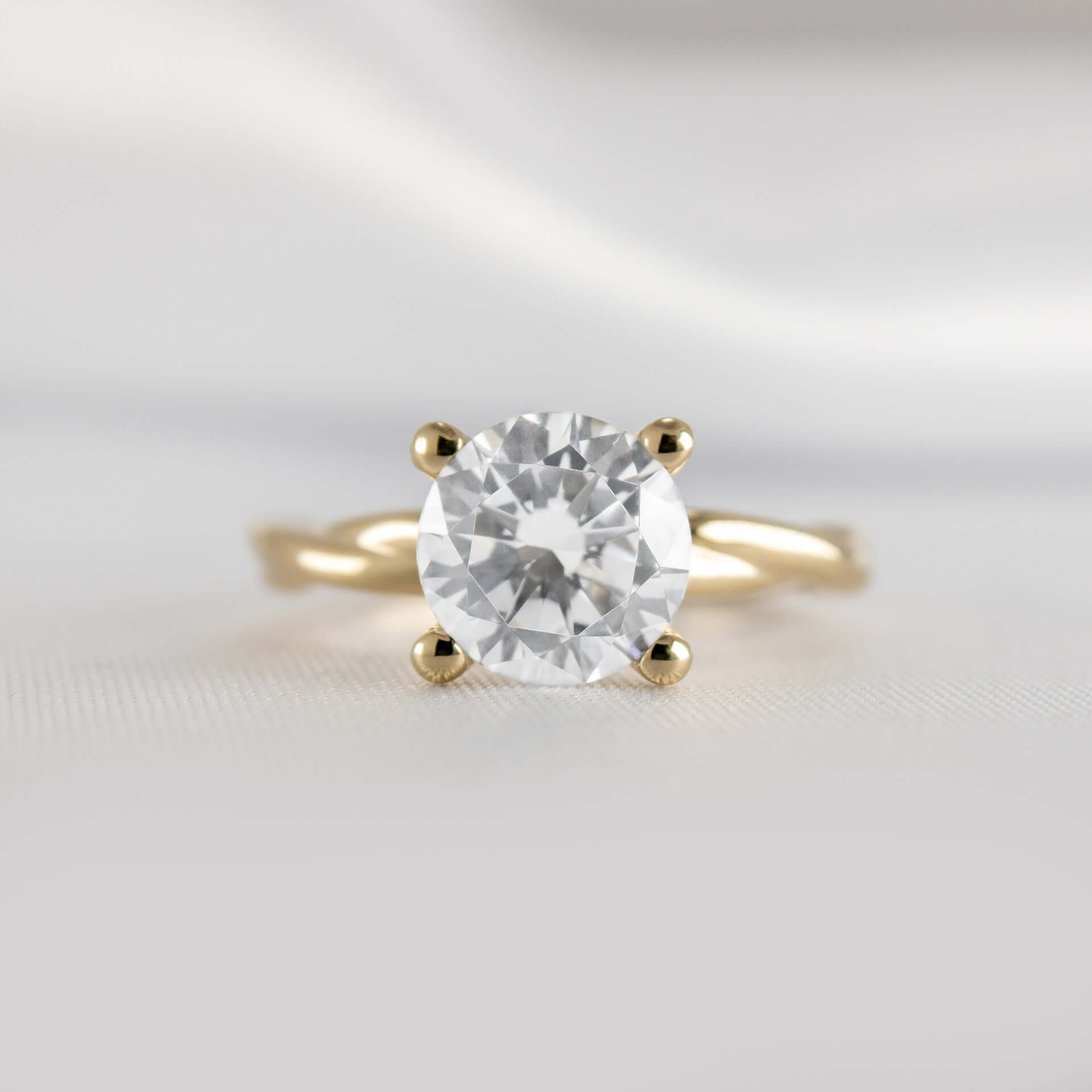What is Diamond Color?
Understanding what diamond color means is very helpful when evaluating and selecting a diamond. Most diamonds used in engagement rings are near-colorless, with hints of yellow or brown. The more colorless a diamond is, the rarer it is, and its price will reflect this rarity.
There are two categories for diamonds; 'colorless' or 'fancy colored.' Colorless diamonds are graded from D, completely colorless, to Z, tinted light yellow-brown. Fancy colored diamonds, like blue and pink diamonds, are not graded on a color scale like colorless diamonds are.
The color is an important factor in the diamond quality. When we evaluate most gem-quality diamonds, they are actually evaluated based on the absence of color. When chemically and structurally perfect, a diamond has no hue and is more valuable. Under controlled lighting and precise viewing conditions, the D-to-Z diamond color-grading system compares a stone's colorlessness to master stones to establish a color grade.
When considering a diamond, colorless (D-F) or near colorless (G-J) are most desirable for engagement rings.











